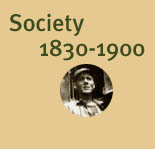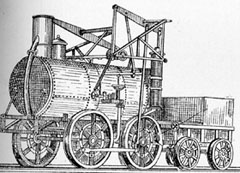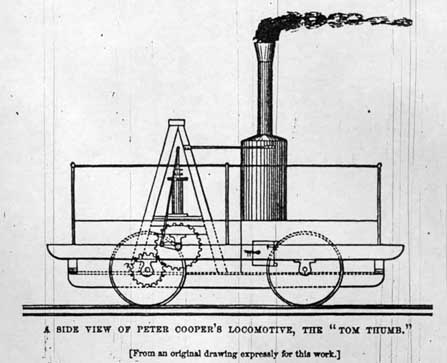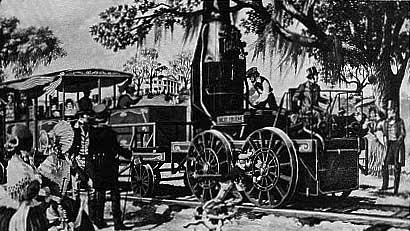 Early
Locomotives
Early
Locomotives
 |
| The Stourbridge Lion |
The first locomotive to run in the United States belonged to Colonel
John Stevens. He operated his experiment in Hoboken, New Jersey in
1825. However, it ran only on a circular track and was never used
commercially. The Stourbridge Lion was the first engine to run on
a standard track. The Lion was built in England and operated in the
United States by a civil engineer named Horatio Allen.
 |
| The Tom Thumb |
 |
In 1829, Allen tried the Lion on wooden tracks, but it proved too heavy
for the rails. Also in 1829, Peter Cooper of New York built and operated
the Tom Thumb. Cooper's train proved able to run on a common carrier
railroad. Developments also occurred in the South, where, in Charleston,
South Carolina the Best Friend, an engine built in New York, first pulled
a train of cars with regular passenger service.
These tests soon gave way to reliable steam locomotive designs and by
1835 eleven states had granted more than 200 railroad charters and more
than a thousand miles of rail was in operation. Many charters
 |
| The Best Friend on its inaugural run in South Carolina |
never built lines and many lines quickly failed. Making money on
the railroads would prove to be a tricky business throughout the rail era.
Despite the financial risks people continued to build new lines.
By 1850 there were more than 9,000 miles of railroad, mostly composed of
short lines, but over time many lines connected to form new routes for
transportation.
 Early
Locomotives
Early
Locomotives Early
Locomotives
Early
Locomotives